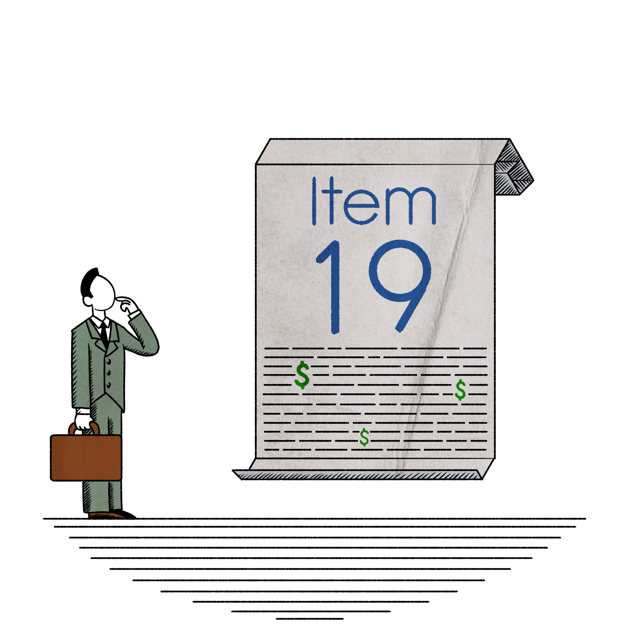Franchise Questions
Should I have a financial performance representation (FPR) in my FDD?
When I get asked this question, I respond as follows:
“The FDD has 23 Items. If there were just one Item in the Franchise Disclosure Document (FDD) you could review before deciding whether or not to buy a franchise, which Item would it be? I don’t care what it is, how much it costs, I need to know if it makes money.”
FDDs tend to be packed with information and details, and prospective franchisees often review several FDDs before making their decision. But in reality, most franchisees are looking for one thing: a franchise that will bring a good return on their investment. This is why most prospective franchisees would say that Item 19 is the most important Item in the FDD: if the Item 19 does not pass the test, none of the other items are relevant.
This is one reason why presenting a FPR in a fair and accurate manner is vital. Item 19 tends to be high risk from a litigation standpoint, and should a franchisee become unhappy with the franchise relationship, its attorney will likely try to pick apart the Item 19 to find anything unreasonable or misleading.
In 2018, NASAA created a commentary that raised the bar for Item 19 representations. You can access the complete NASAA Commentary here. Here are some of the most important new requirements:
Newly Required Definitions
- Gross Sales: If the FPR uses gross sales or a similar term (e.g. gross revenues) you must also include a definition of the term and disclose which items, if any, you are deducting from the total revenue, including sales tax, discounts, allowances, and returns.
- Net Income: If the FPR uses net income or a similar term (e.g. net profit) you must also include a definition of the term and disclose which items you are deducting from gross profit, including ordinary and recurring operating expenses, interest, income taxes, depreciation, and amortization.Using Averages and Medians
- Whenever you disclose an average of any numbers in the FPR, you also must disclose the median of those numbers because the existence of outliers may skew an average, thereby making it misleading (even if the calculation is accurate).
- Whenever you disclose the average of gross sales, you also must disclose the highest and lowest numbers in the range.
Imputing Franchisee Costs on Company-Owned Outlets
- In a FPR disclosing net profit for a company- or affiliate-owned outlet, you must adjust or supplement the FPR to include imputed royalties, advertising fund contributions, and other fees not paid by these outlets.
- The disclosure of these differences must be clearly presented and in the same format as the rest of the FPR. For example, if the FPR presents data in a table, the differences must be adjusted within or added to the end of the table.
- Imputing costs in this way may constitute a financial projection using historical data. We recommend you include a disclosure regarding the bases and assumptions relied upon as a part of the notes to the FPR tables.

Including Company-Owned Data when Operational Franchises Exist
- Generally, if you make a FPR that uses data from company-owned outlets, you must also include data from franchised outlets if any exist.
- Some registration states require that you exclude any franchised outlets that have been in operation less than 12 months as of the most recent fiscal year end.
Excluding Data of Closed Outlets from Averages or Medians
- You can only exclude data from closed outlets if you also disclose:
– the number of company-owned outlets that closed during the time period;
– the number of franchised outlets that closed during the time period; and
– the number of excluded outlets that closed during the same time period after being open less than 12 months.
Separating Company-Owned and Franchised Outlet Data
- If you have a FPR that includes data from both franchised outlets and company-owned outlets, you must disclose the data from the company-owned outlets and the franchised outlets separately. Once you separately disclose data from both franchised outlets and company-owned outlets in an FPR, you may then choose to also present the same data in a combined format.
Subsets
- Subsets of data are allowed if they are reasonable, accurate, and not misleading
- Subsets are not allowed if there are fewer than 10 total combined company-owned and franchised outlets as of the end of your last fiscal year
- You can’t use subsets to cherry pick (e.g. top performers)
- Some registration states won’t allow any subsets that only report on more mature outlets (2+ years)
